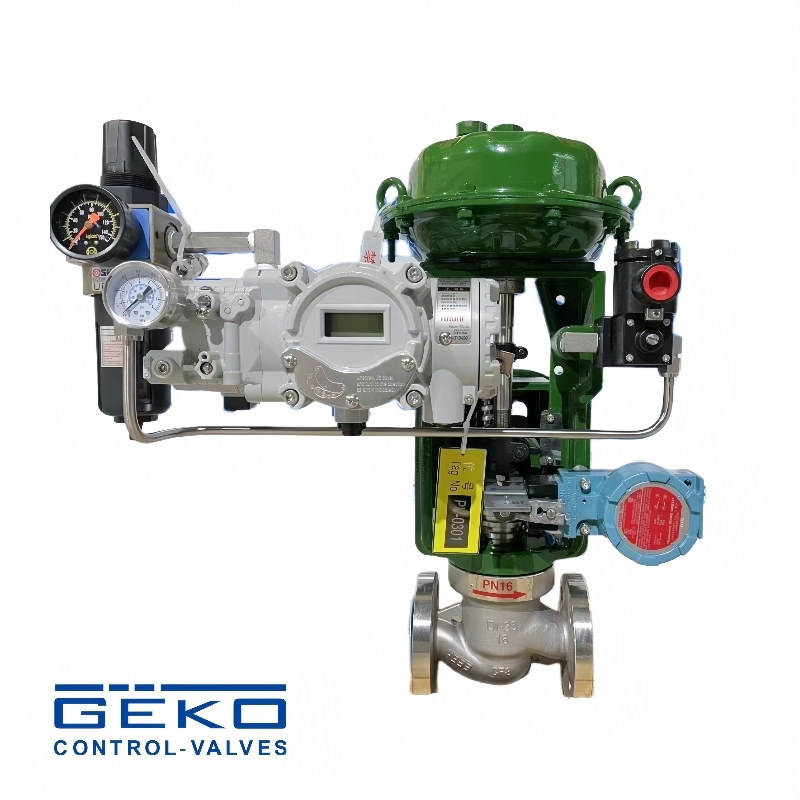What Are You Looking For?
In industrial process control, the precise regulation of fluid flow is crucial for maintaining efficiency, safety, and product quality. Among the various types of control valves, the pneumatic diaphragm control valve stands out for its reliability and versatility. This article focuses on the advanced features of a smart pneumatic diaphragm control valve designed specifically for small flow rates, incorporating heat dissipation and a single-seat design.

The smart pneumatic diaphragm control valve is engineered to manage small flow rates with high precision. This is essential in applications where minute adjustments in flow can significantly impact the process, such as in chemical dosing, laboratory testing, and fine chemical production.
Enhanced Sensitivity: The valve's design ensures that even the smallest changes in diaphragm position result in accurate flow adjustments.
Stable Performance: Advanced control algorithms and feedback systems ensure that the valve maintains stable flow rates even under varying process conditions.
Effective heat dissipation is critical to maintaining the performance and longevity of control valves, especially in high-temperature environments.
Integrated Cooling Fins: The valve body is equipped with cooling fins that increase the surface area for heat exchange, thereby improving thermal dissipation.
Thermally Resistant Materials: The use of high-temperature resistant materials in the valve's construction ensures durability and reliable performance under thermal stress.
The single-seat design of the valve provides several advantages in terms of sealing, maintenance, and performance.
Tight Sealing: The single-seat design ensures a tight shutoff, minimizing leakage and enhancing process efficiency.
Reduced Maintenance: Fewer moving parts and a simpler internal structure result in lower maintenance requirements and easier servicing.
Improved Flow Characteristics: The single-seat design reduces turbulence and pressure drop across the valve, ensuring smooth flow control.
The integration of smart technology in the pneumatic diaphragm control valve brings a new level of automation and control.
Digital Positioner: The valve is equipped with a digital positioner that provides precise control of the diaphragm position based on input signals from the control system.
Remote Monitoring and Diagnostics: The smart control system allows for remote monitoring of valve performance and real-time diagnostics, enabling predictive maintenance and reducing downtime.
Adaptive Control Algorithms: These algorithms automatically adjust valve operation to compensate for process variations, ensuring consistent performance.
The smart pneumatic diaphragm control valve is designed to be compatible with contemporary industrial automation systems.
Communication Protocols: The valve supports various industrial communication protocols such as HART, Profibus, and Foundation Fieldbus, facilitating seamless integration into existing control networks.
Easy Integration: Standardized connection interfaces and mounting options ensure that the valve can be easily integrated into a wide range of systems and applications.
The smart pneumatic diaphragm control valve is ideal for a variety of applications that require precise flow control and reliable performance under challenging conditions.
Chemical Processing: Accurate dosing and mixing of chemicals in production processes.
Pharmaceutical Manufacturing: Precise control of ingredients and reactions in drug production.
Food and Beverage: Ensuring consistent flow rates in the production of food and beverages.
Laboratory and Research: Fine control of fluids in experimental setups and testing.
The smart pneumatic diaphragm control valve for small flow rates, with its heat dissipation capabilities and single-seat design, represents a significant advancement in control valve technology. Its precision, reliability, and compatibility with modern industrial systems make it an invaluable asset in various high-precision applications. By integrating smart control features and robust construction, this valve not only enhances process efficiency but also contributes to overall system safety and longevity.
